In 2025, our third year of participating as “ThreeBond Racing,” we will aim for victory with a new structure to achieve our long-awaited championship for the first time.


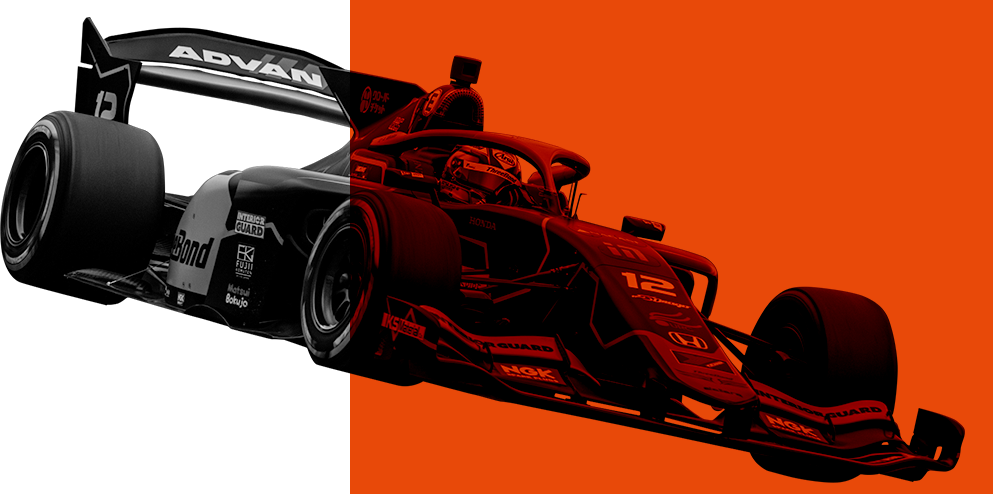

A formula car is a single-seater car with exposed tires that is designed specifically for racing.
The world championship for formula cars is famously known as “F1”, but ThreeBond competes in “Super Formula” which is the highest-level formula car race in Asia, boasting speed range next to F1.
The championship is held under “equal conditions” with all teams using the same car body and tires, and engines manufactured by Toyota or Honda according to the regulations. The outcome is determined by limited adjustments made in accordance with the vehicle regulations, the driver’s ability, and the team’s strategy.
The car also features an “overtake system” that enables the engine power to be increased just for a limited period of time, allowing racing battles to take place at speeds of over 300 km/h.
The race also takes the global environment into consideration, using natural materials derived from hemp for the body of its vehicles, and using “carbon neutral tires” made from recycled materials and renewable raw materials.
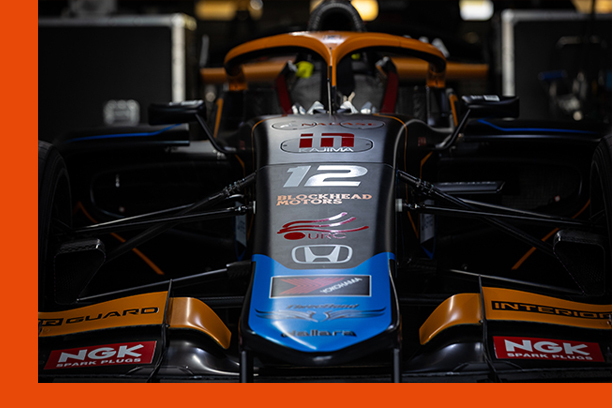
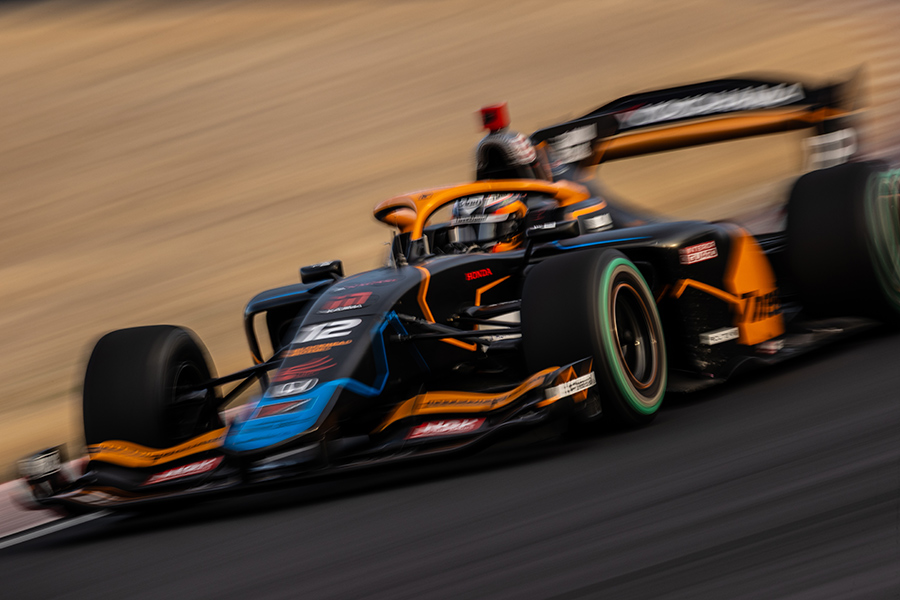
| March 8- 9 |
Round1/Round2 | Suzuka Circuit | - |
|---|---|---|---|
| April 19- 20 |
Round3/Round4 | Mobility Resort Motegi | - |
| May 17- 18 |
Round5 | AUTOPOLIS | - |
| July 19- 20 |
Round6/Round7 | Fuji Speedway | - |
| August 9- 10 |
Round8 | Sportsland SUGO | - |
| October 11- 12 |
Round9/Round10 | Fuji Speedway | - |
| November 22- 23 |
Round11/Round12 | Suzuka Circuit | - |

This year marks the third participating year as ThreeBond Racing, and the team has appointed Kodai Tsukakoshi as the team director. Koudai Tsukakoshi is also an active racing driver, and until last year, he served as an accurate advisor to the team. He will utilize his wealth of experience in the team director role.
The driver will be Atsushi Miyake, continuing on from last year. He achieved third place in last season’s SUPER GT series.
This year, the team will be aiming for victory with a new team structure, having welcomed Toshihiro Ichise as our track engineer. He has abundant experience working for a team that won Super Formula.

- Team name
- ThreeBond Racing
- Team director
- Koudai Tsukakoshi
- Driver
- Atsushi Miyake
- Track engineer
- Toshihiro Ichise
- Data engineer
- Kenji Shirono
- Performance engineer
- Masahito Sato
- Chief mechanic
- Masaki Fujiwara
- Second mechanic
- Takaaki Niibo
- Chassis
- Dallara SF23
- Engine
- HONDA M-TEC/HR-417E
- Vehicle maintenance
- Kingelt.Co.,Ltd.
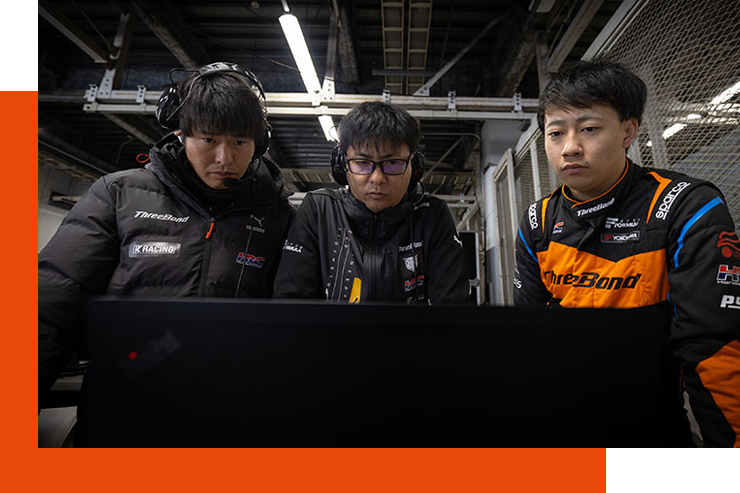

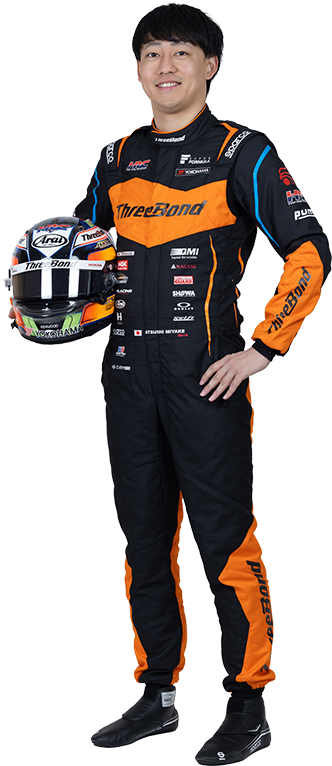

- Birthday
- Mar 17, 1999
- Height
- 171cm
- Blood
type - Type B
- From
- Mie Prefecture
- Hobby
- Watching anime
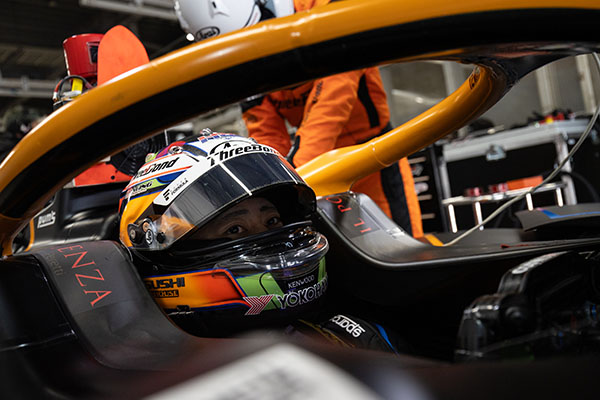

- 2024
-
Participated in Super Formula(ThreeBond Racing)
Participated in SUPER GT (500 Class) (NISMO NDDP) and won 3rd place in the series
- 2023
-
Participated in SUPER GT (300 Class) (Max Racing)
Participated in the GR86/BRZ Cup (4 MINUTES DRAGO CORSE)
- 2022
-
Participated in Super Formula(TEAM GOH) and won 14th place in the series (Won 3rd place once)
Participated in SUPER GT (300 Class) (Max Racing) and won 26th place in the series
- 2021
-
Participated in SUPER GT (300 Class) (Max Racing) and won 5th place in the series
Participated in Super Taikyu, Japanese Endurance Race (ST-3 Class) (Max Racing) and won 2nd place in the series
Participated in SUPER FORMULA LIGHTS (Rounye Sports ) and won 4th place in the series








